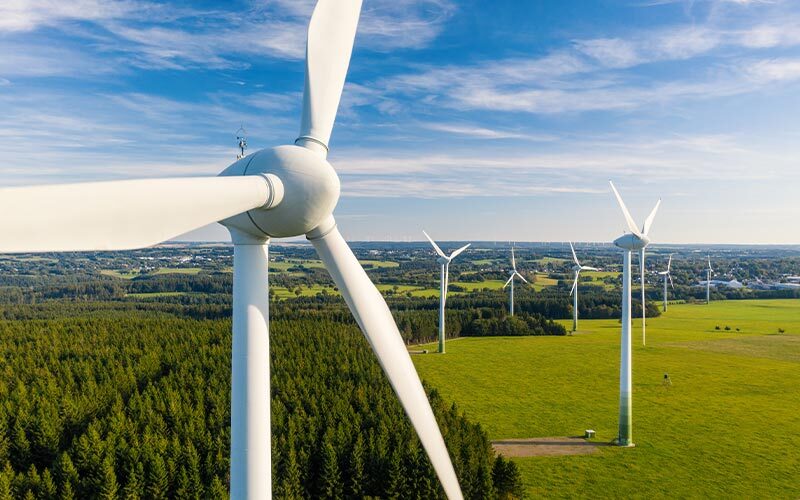
The growth of the world’s capacity to generate electricity from solar panels, wind turbines and other renewable technologies is going to accelerate in the coming years, with 2021 setting a fresh all-time record for new installations, the IEA says in a new report.
Despite increasing costs for key materials used to make solar panels and wind turbines, the additions of new renewable power capacity for the year just finished were forecast to rise to 290 gigawatts, surpassing by 3% the previous all-time high set the year before.
In the next five years, global renewable electricity capacity is forecast to rise more than 60% from 2020 levels to over 4 800 GW – corresponding to the current total global power capacity of fossil fuels and nuclear combined. Renewables are set to account for almost 95% of the increase in global power capacity through 2026, with solar photovoltaic alone covering more than half. Compared to the five years spanning from 2015 to 2020, the amount of renewable capacity to be added between 2021 and 2026 is expected to be 50% higher. This is driven by stronger government policies and more ambitious clean energy goals announced before and during the COP26 Climate Change Conference.
Outlook by region and by type
The growth of renewables is forecast to increase in all regions: China remains the global leader in the volume of capacity additions. India is set to come top in terms of the rate of growth, doubling new installations compared with 2015-2020. Deployments in Europe and the United States are also on track to speed up significantly from the previous five years. These four markets together account for 80% of renewable capacity expansion forecast worldwide.
Solar PV remains the powerhouse of growth in renewable electricity, with its capacity additions forecast to increase by 17% in 2021 to a new record of almost 160 GW. In the same time frame, onshore wind additions are set to be almost one-quarter higher on average than during the 2015-20 period. Total offshore wind capacity is forecast to more than triple by 2026.
The IEA report expects this record growth for renewables to take place despite today’s high commodities and transport prices. The high commodities and energy prices pose new challenges for the industry, but elevated fossil fuel prices also make renewables even more competitive. However, should prices remain high through the end of next year, the cost of wind investments would go back up to levels last seen in 2015 and three years of cost reductions due to technology improvements for solar PV would be erased.
Increases in commodities prices do not immediately affect investment costs. Developers, manufacturers and other parts of the supply chain usually build up stocks of materials and have contracts spanning one or multiple years, based on previous prices. However, the increase in raw material and logistics costs ultimately affects the whole value chain and could result in a higher cost of electricity generated at renewable installations. Different areas of the value chain, such as manufacturers, equipment installers and developers, can absorb cost increases in different ways, with some sectors being more affected than others.
Can wind and solar remain competitive despite the growing equipment prices?
Rising gas and coal prices have led average wholesale electricity prices to increase worldwide. In countries such as Germany, the United Kingdom and Spain, average wholesale electricity prices from January to October 2021 more than doubled compared with values observed in 2019 and 2020. Higher natural gas and coal prices have improved the competitiveness of wind and solar PV, despite historic equipment price increases due to high commodity and energy prices.
It is currently too early to assess the medium- and long-term implications of price increases on the deployment of wind and solar PV; so far higher prices have had limited impact on demand for new capacity. Governments haven’t made major changes in their policies nor cancelled auctions, and corporate buying has broken another year-on-year record, demonstrating the cost-competitiveness of renewable resources, even with the slight increase in prices seen in some markets. Should commodity and freight prices moderate in the near future, the cost reduction trend of wind and solar PV would continue, and the long-term impact on the demand for solar PV and wind may be minimal.



